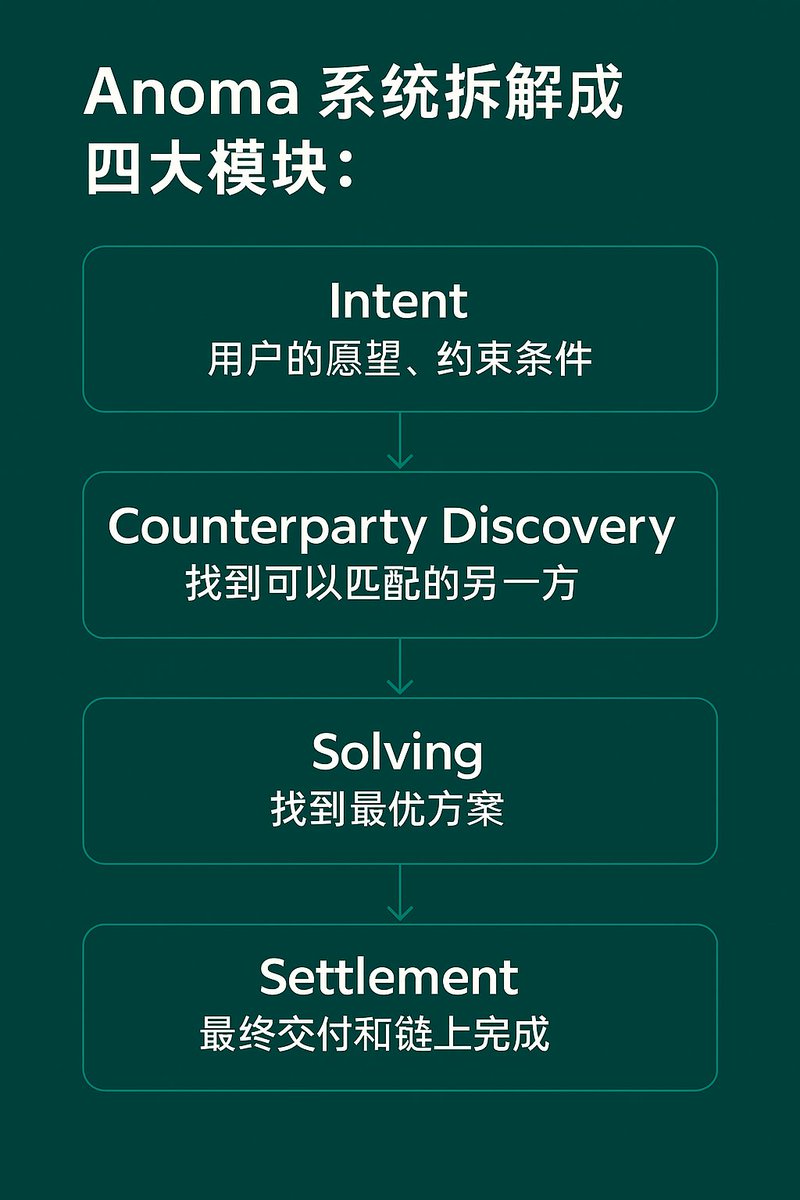If you were to redesign the entire Web3 application architecture today—where would you start?
The answer given by @anoma is: start from "intent," which means starting from the real needs of users, rather than focusing first on frontend pages, contract calls, and other technical details.
The so-called intent-centric architecture, in simple terms, prioritizes "what the user wants" as the primary requirement, no longer hidden parameters behind buttons, but rather the center of the entire system's operation.
Users only need to describe "what I want to do," and the rest—matching, conditional constraints, counterparty searches, and final delivery—will all be automatically coordinated by the system.
For example, if I say: "I want to exchange 100 stETH for an equivalent amount of RWA assets, ensuring the best cost-effectiveness, and complete it within today."
If I were to do this myself, I would either find aggregators for routing or place orders in multiple pools, compare, and wait for transactions to complete, and it might not even be successful. However, in an intent-centric system, this requirement would be deconstructed into clear intentions, broadcasted out, allowing capable solvers to handle and settle it.
Anoma breaks this system down into four main modules:
1⃣ Intent: User's wishes and constraints
2⃣ Counterparty Discovery: Finding a matching counterpart
3⃣ Solving: Finding the optimal solution
4⃣ Settlement: Final delivery and on-chain completion
These four components essentially form the minimal common factor for future applications.
Many complex DApps you are familiar with, such as OpenSea, Gitcoin, and CoWSwap, ultimately operate around these actions. It's just that traditional architectures make this process cumbersome and fragmented, leading to inconsistent user experiences and high development difficulties.
The benefit of an intent-centric approach is that it abstracts and standardizes everything. Most importantly, it inherently possesses decentralized attributes.
In Anoma's design, solvers and settlements are on an open network, where anyone can participate in fulfilling intents, not a centralized router, nor a default preset "only path."
And this is just the beginning; Anoma will later discuss identity, data flow control, and other more fundamental aspects. The entire intent architecture may be the gateway to the "post-smart contract era."
I personally have high hopes for the intent-centric architecture, and I even believe it has the potential to redefine the structure of on-chain applications, much like the "account model" and "EVM" did back in the day.
Show original
56.47K
89
The content on this page is provided by third parties. Unless otherwise stated, OKX is not the author of the cited article(s) and does not claim any copyright in the materials. The content is provided for informational purposes only and does not represent the views of OKX. It is not intended to be an endorsement of any kind and should not be considered investment advice or a solicitation to buy or sell digital assets. To the extent generative AI is utilized to provide summaries or other information, such AI generated content may be inaccurate or inconsistent. Please read the linked article for more details and information. OKX is not responsible for content hosted on third party sites. Digital asset holdings, including stablecoins and NFTs, involve a high degree of risk and can fluctuate greatly. You should carefully consider whether trading or holding digital assets is suitable for you in light of your financial condition.

